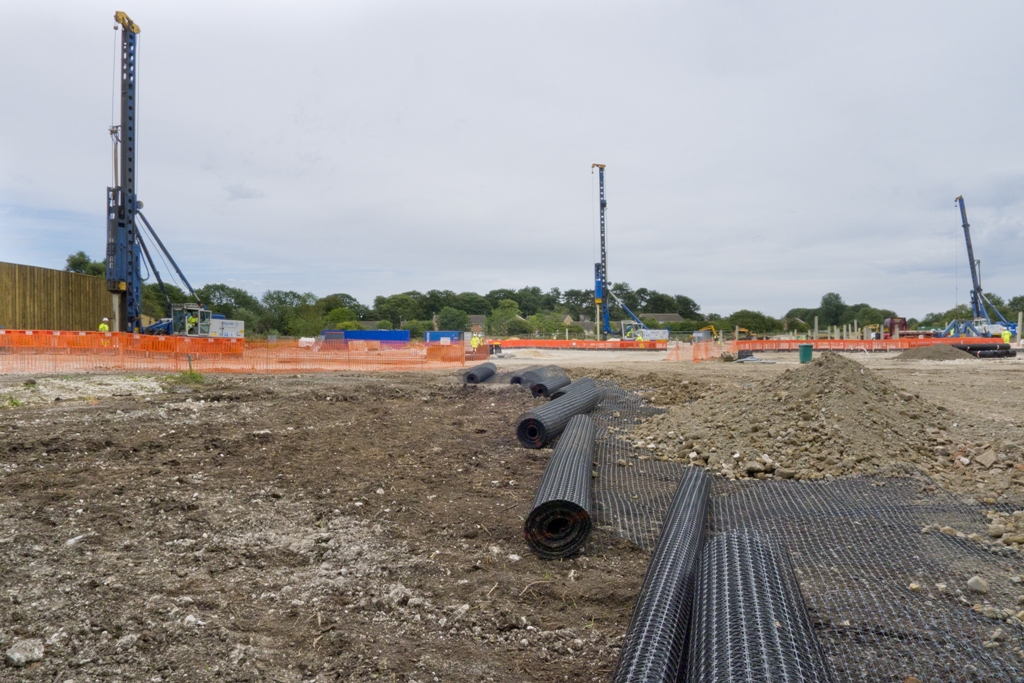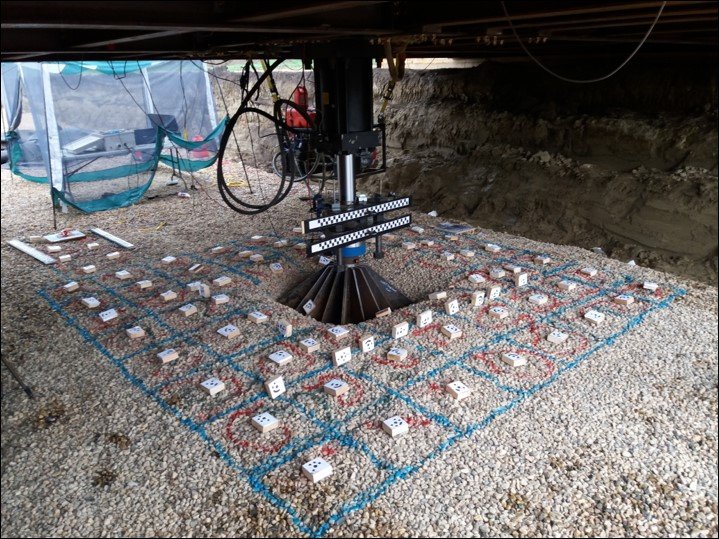Plate Load Tests - Uses, Plate Size and Interpretation
by Andrew Lees, on November 14, 2019
Plate load tests, also known as plate bearing tests, are commonly used in geotechnical engineering to work out the physical properties of a ground surface, including actual strength and ground bearing capacity.
In this guide, we’ll first explore what a plate load test is, how one is carried out and the interpretation of the results. We’ll then consider the importance of plate size in a plate bearing test and some applications of the test.
Use the links below to jump to the sections you’re most interested in:
- What is a plate load test?
- How does a plate bearing test work?
- Advantages of plate bearing tests
- Interpreting the results of a plate load test
- What size of plate is used in a plate load test?
- Plate load testing of working platforms
- Plate load testing in action
What is a plate load test?
A plate load test (also known as a plate bearing test) determines the ground's bearing capacity and actual strength by applying an increasing load from a circular steel plate to induce settlement. It is used in cases where the ground particle sizes are large or the soil has a firmer texture.
A common application of the plate loading test is in the design and assessment of working platforms, where the properties of the ground beneath must be determined so that we know the platform will be stable when in use. To ensure all safety criteria are met, it is crucial that the test is carried out correctly.
How does a plate bearing test work?
A plate bearing test will typically be carried out at the level of the foundation beneath a working platform – this could be on the ground surface itself or in a shallow pit. In this kind of in-situ test, a circular steel plate is positioned on the ground and an increasing load is applied until the plate begins to settle quickly.
Advantages of plate bearing tests
There are several advantages to using a plate bearing test to determine the bearing capacity of a soil. Here are a few of the top advantages:
-
Plate bearing tests are relatively quick and easy to perform.
-
They can be conducted on site.
-
This testing method can be used to test a wide range of soil types.
-
These tests provide accurate results.
-
They’re cost and time-efficient.
-
Plate bearing test equipment is portable and easy to set up.
Interpreting the results of a plate load test
Having determined the total value of the load required to induce settlement, we can then calculate the ultimate bearing capacity of the ground (the maximum vertical pressure that can be applied before shear failure occurs). To do this, we divide the total load value by the area of the plate.
Ultimate ground bearing capacity = total load value required to induce settlement / area of the steel plate
From here, we can determine the safe bearing capacity of the ground by dividing the ultimate bearing capacity by a factor of safety (typically 3). Visit our guide to the bearing capacity of soil for more information on this.
What size of plate is used in a plate load test?
Plate load tests typically use 0.3m or 0.6m diameter plates, with the size of the pressure bulb created (and therefore the depth of ground being tested) being related directly to the size of the plate – usually twice its diameter (so about 0.6m depth for a 0.3m diameter plate).
As a result, the size of the plate has implications for the results of a plate bearing test. A larger plate will be testing deeper into the ground, so the properties of the soil being tested will differ. Often, the subgrade soil at greater depths will be weaker than the compacted soil just beneath the surface, meaning that the bearing capacity value will be lower than if a smaller plate were used.
Knowing that the plate size affects our ground bearing capacity calculation, we should use a plate with a similar diameter to the structure being supported by the working platform: if the ground tracks of a piling rig are 0.6m in diameter, we should use a plate that is close to 0.6m in diameter to ensure that we are actually testing how the ground will settle under its load..
Watch the video below for a full explanation of why the plate size is important in a plate bearing test.
Ground Coffee - Episode one (plate size matters). Andrew Lees discusses the importance of using large plates when testing your working platform.
Plate load testing of working platforms
Let’s consider how this works when plate load testing a working platform, where there are two distinct layers: a stronger, compacted granular material layer over a weaker subgrade.
If the platform is thicker than 0.6m, then a 0.3m diameter plate load test will only determine the bearing capacity and settlement characteristics of the granular layer and not of the weaker ground beneath.
While these results can be used for quality control – to check the platform has been compacted correctly and meets specification – they are inadequate for assessing the safe bearing capacity of the platform.

Working platforms incorporating geogrids are a proven way to safely support heavy construction equipment, such as piling rigs and support cranes as part of civil engineering temporary works
A better approach – and one Tensar advises – is to use a larger plate with a diameter closer in size to the width of the load imposed by the construction equipment.
This means the plate bearing test will create a pressure bulb similar in size, and depth, to the one created by a rig’s tracks. As a result, the settlement characteristics of both the platform and subgrade will be measured, giving a more accurate assessment of the ultimate (and safe) plate bearing capacities of the platform.
Plate load testing in action
Tensar teamed up with the University of Saskatchewan in Canada to carry out full-scale plate load tests on a trial section of a granular working platform on a clay subgrade, which you can read more about here.

Monitored plate load field trial carried out on the Canada Prairies
Next steps
This guide has explained plate load tests (plate bearing tests), outlining what they are, how they work, how to interpret the results, the importance of plate size and the real-life applications of this in-situ test.
If you’ve found this post useful, you may also want to read:
- Bearing Capacity of Soil - Types and Calculations
- Understanding Settlement in Geotechnical Engineering
- What Is the Shear Strength of Soil?
Tensar manufactures industry-leading geogrids, which are a proven method of soil stabilisation beneath working platforms. Visit our geogrids and working platforms pages for more information.
Want to learn more about Tensar's T-Value Methodology?
You can access our T-Value Guide to temporary works design here.


